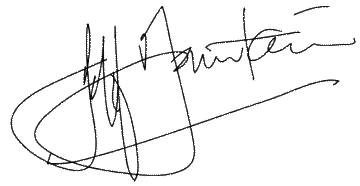Last week I visited Holland for the first time in my life–Holland in Michigan, USA, that is. Just a 30 minute drive from Grand Rapids and close to the shores of Lake Michigan, Holland is a city of 60,000 today, pioneered by 19th century Dutch immigrants from close to where I live in The Netherlands.
It’s a strange sight to see Dutch placenames like Drenthe, Overijssel, Zeeland and Gelderland in the mid-west. It’s stranger to hear they way they are pronounced! Shops and businesses carry family names straight from our phone book at home: Doornbos, Hoeksema, Zijlstra….
The main purpose of my visit to Holland and Grand Rapids was to connect with scholars of Dutch theologian and politician, Abraham Kuyper, and to explore with the staff of Kuyper, Hope and Calvin Colleges about possible partnership on projects in Europe.
In his home country, Kuyper today is largely unknown, ignored or disparaged (for reasons I don’t yet fully fathom). Yet a thriving scholarship on the other side of the Atlantic is feeding a revival of interest in broader evangelical circles in the man who, over a century ago, famously declared: There is not one square inch in the whole domain of human existence over which Christ, who is sovereign over all, does not cry, ‘MINE!’
Liberty
Professor John Bolt, author of a book on Kuyper’s public theology A Free Church, A Holy Nation, reminded me of Kuyper’s own observations of America when he had visited Grand Rapids and other cities in 1898. Bolt labelled these observations ‘the Holland-America Line of Liberty’.
Standing on a platform draped with both the American and Dutch flags, Kuyper had praised ‘the American experiment in ordered liberty’. Such freedom had been the fruit of Calvinism’s emphasis on divine sovereignty and human dignity, he had told his 2000-strong audience.
Kuyper’s admiration for American liberty consciously echoed the views of two other Europeans who had visited America earlier that century. Alexis de Tocqueville, the Frenchman, wrote after visiting in 1831:
‘America is still the place where the Christian religion has kept the greatest real power over men’s souls; and nothing better demonstrates how useful and natural it is to man, since the country where it now has the widest sway is both the most enlightened and the freest.’
The other illustrious European visitor was Lord Acton, the English conservative Catholic famous for his dictum that ‘Power tends to corrupt, and absolute power corrupts absolutely’. Visiting in 1853, Acton saw the American balance of ordered liberty, of equality with security as ‘necessarily an impressive lesson to England’.
 Two recent European observers who agree with Kuyper that the Americans got it right concerning the separation of church and state are the writers of God is back (2009). John Micklethwait & Adrian Wooldridge, editor and Washington bureau chief respectively of The Economist magazine(!), explain the genius of the First Amendment–’that Congress shall make no law respecting an establishment of religion, or prohibiting the free exercise thereof’. It created the tolerance that recognised freedom of religion, and created a level playing field for churches: ‘The decision to get government out of the religion business did as much as almost anything else to establish America’s role as the most religious country in the advanced world.’
Two recent European observers who agree with Kuyper that the Americans got it right concerning the separation of church and state are the writers of God is back (2009). John Micklethwait & Adrian Wooldridge, editor and Washington bureau chief respectively of The Economist magazine(!), explain the genius of the First Amendment–’that Congress shall make no law respecting an establishment of religion, or prohibiting the free exercise thereof’. It created the tolerance that recognised freedom of religion, and created a level playing field for churches: ‘The decision to get government out of the religion business did as much as almost anything else to establish America’s role as the most religious country in the advanced world.’
Common ground
A visit to the Acton Institute for the Study of Religion and Liberty in Grand Rapids revealed how much common ground had been explored between the Catholic social teaching of Pope Leo XIII and Kuyper’s ‘sphere sovereignty’. I was guest at a breakfast at which Acton–whose president is a Catholic priest–presented a major translation project: of Kuyper’s three-volume ‘Common Grace’! As they loaded me up generously with books for the Schuman Centre, I began to discover how much dialogue there had been over the past decade or so between these two leading streams of Christian social teaching in this bastion of Reformed thinking!
Two more surprises awaited me. As we drove through the grounds of Calvin College I glimpsed the familiar outline of a sculpture made by my Romanian friend, Liviu Mocan, The Decalogue–about which I have previously written in ww.
Then when I came across a display in the college chapel explaining the sculpture as representing the Ten Commandments, there I saw my wife in a photo (standing, in white) taken last year when the sculpture stood in Geneva by the Reformers Wall.
Despite America’s wide open spaces, it’s still a small world!
Till next week, back in the original Holland,
Jeff Fountain
Till next week,
